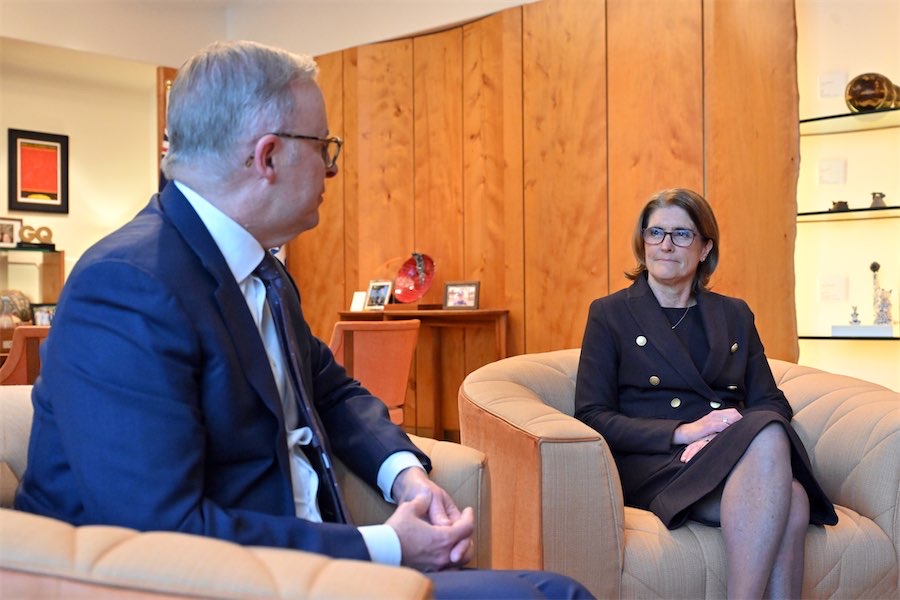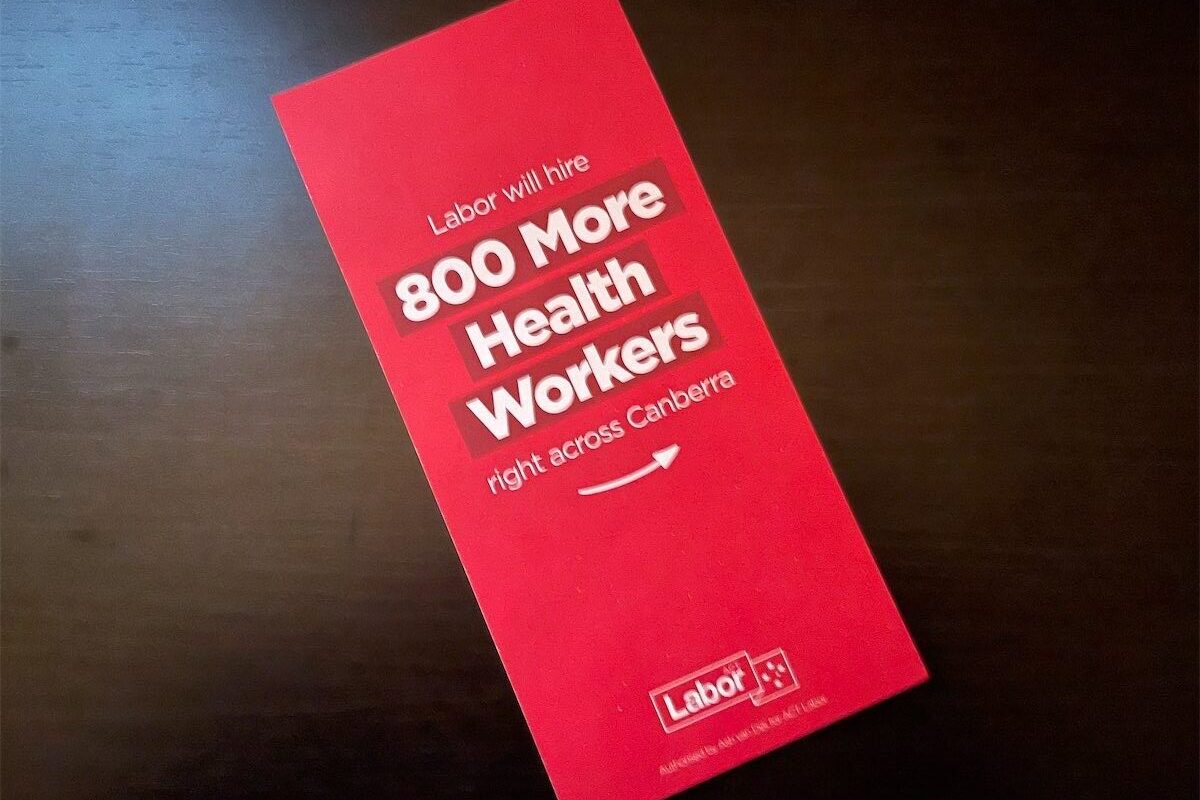
“The question the Greens must answer is that when the hard reality of budgetary choice hits, will they, contrary to the stand they have taken over the last decade in government, prioritise public housing over the tram?” JON STANHOPE & KHALID AHMED dismantle the Greens public housing policy.
A reliable predictor of future behaviour is that of the past. This does not, of course, mean that the future cannot be changed or reshaped.
However, if there is no evidence of, or commitment to, change it is reasonable to expect more of the same irrespective of lofty claims or promises to the contrary.
Sadly, that is the only realistic conclusion to draw from the ACT Greens’ latest declared policy on public housing.
The policy aim is to build and/or buy 10,000 dwellings over a decade with $2.2 billion to be provided in the next term of the Assembly.
The Greens have costed the policy at $5.9 billion over 10 years and have declared that they will “fight for co-investment from the federal Labor government to make up for the decades of neglect that has caused the crisis in public housing”.
The policy was attacked upon release by the Greens’ coalition partner, namely the Labor Party, by no less than the deputy Chief Minister and Minister for Housing, Yvette Berry.
She said the Greens were making promises to vulnerable Canberrans which they knew they couldn’t possibly keep, and that “they know better, and they should be upfront with the community about the huge hurdles to implement this policy”.
Minister Berry would know, having failed to replace the 1288 public housing dwellings on Northbourne Avenue, which were sold off through the Asset Recycling Initiative to fund the light rail project.
We support any increase in public housing stock, and any legitimate proposal that goes beyond the usual blaming of the Commonwealth for the shortfall, would be welcome.
We also consider that delivering an additional 10,000 dwellings, while challenging is achievable, with some imagination and sustained commitment.
However, the Greens’ newly announced policy cannot possibly be delivered under current policy settings, choices and priorities.
Noting that they have, as members of the ACT government, been directly involved in and responsible for the policy settings that have led to the “crisis in public housing”, the Greens’ announcement is as hypocritical as they come and worthy of a gold medal in chutzpah.
The policy was announced by Greens Leader Shane Rattenbury and Rebecca Vassarotti, both ministers in the coalition Government. Rattenbury has been a minister since 2012 and has negotiated three parliamentary agreements for power sharing with the ALP, and has sat in Budget Cabinet in all those years.
Vassarotti has been engaged with the affordable housing supply and housing services system for well over a decade, as a government appointee on the Board of Community Housing Canberra from 2013 to 2020, and as Minister for Housing Services since 2020. Both have had plenty of time, power and authority to demonstrate their commitment to public housing.
In 2012, Mr Rattenbury negotiated and signed a parliamentary agreement under which he was appointed a minister. The agreement made an unconditional commitment to a light rail network that included the procurement and financing of the project, irrespective of and in advance of both the business case and costings for the project.
In that same agreement, “public housing” appears only once – in relation to an energy efficiency program providing an average of less than $400 per dwelling for four years. There is no mention of, or commitment to increasing housing stock.
Although Chief Minister Andrew Barr had led Canberrans to believe that his government could do everything, when budgetary choices needed to be made, light rail trumped everything else, eg hospital redevelopment was scaled back and postponed repeatedly, the football stadium development was put on a feasibility merry-go-round and public housing stock was sold off en masse with proceeds of the sales directed to the tram under an agreement with the Commonwealth Government.
Rattenbury was a minister in Barr’s cabinet and hence a party to the disposal of the 1288 units of public housing, when the agreement was signed.
Community Housing Canberra (CHC) was established as a Tier 1 provider and supplier of community housing stock under the Affordable Housing Action Plan in 2007.
ACT government support of CHC consisted of a $70 million loan facility and guaranteed access to land for 120 dwelling sites annually (without having to compete in the market) under an MOU. Those critical inputs (land and finance) allowed CHC to grow its portfolio at an average of 20 per cent a year until 2014.
The MOU was abandoned in 2014 by the Labor/Green coalition and CHC was left to compete with commercial developers in an environment of squeezed land supply. Its owned stock has consequently stagnated since then.
Vassarotti remained on the CHC Board until 2020, and we are unaware of any campaign or interest by her or the Greens to restore CHC’s access to adequate land for affordable housing.
In 2022, Labor and the Greens cancelled the CHC finance facility thereby ending the second critical enabler of affordable housing supply. To our knowledge, there had been no breach of the finance facility and CHC had, in fact, been making interest and capital payments on the loans.
Despite this, Labor and the Greens called in the outstanding loan amount of $63.112 million. This was repaid by CHC transferring housing stock valued at $62.070 million to the ACT government. The government also shamelessly forced CHC to make a cash payment to it of $1.042 million for the remaining loan amount.
The details of this remarkable assault on the ACT’s premier provider of community housing can be found in CHC’s 2021-22 Annual Financial Statements on Pages 43 and 55.
It is ironic that Berry chased and recovered $1 million from an affordable housing provider noting the above-market tender cost of the Campbell Primary School project of the same order.
Across Australia there are programs in place to transfer public housing stock to community housing to build up this sector for well demonstrated benefits. Over the past five years, for example, NSW has transferred more than 15,000 dwellings, and with the exception of WA, all other jurisdictions have similarly made stock transfers. ACT is the only jurisdiction that has paddled against the national policy flow and forced a community housing provider to transfer housing to it.
While we do not suggest that Vassarotti alone made this warped decision, but that as Minister for Housing Services she, along with her two Greens colleagues in cabinet, must under the Westminster conventions accept full ownership of the decision.
The Greens have claimed that their proposed policy will “fundamentally reshape Canberra’s housing market”. That claim demonstrates a fundamental lack of understanding of the housing market.
To reshape the housing market, there will need to be initiatives across the housing continuum. The policy will, for example, require a 28 per cent increase in annual land supply – a tall order when the government has been falling short of its current annual target by an average of 19 per cent since the last election. The policy assumes an extra 200 stand-alone dwelling sites being available every year. For that to occur the Greens will need to abandon their entrenched opposition to greenfield supply.
We estimate the total cumulative interest costs of the proposal over 10 years at around $2.2 billion, which is higher than the interest costs estimate released by the Greens. However, their public release does not provide any information on how the capital cost and interest costs of the policy will be funded.
We have assumed, quite reasonably, that interest costs will be capitalised, ie interest will accumulate into further debt, noting that the government is already borrowing to pay its interest costs on existing debt. The total cost of the policy, if it were delivered, is estimated at $8.1 billion
For a party in government, and seeking to remain in coalition, to not release the source of funds for a policy as ambitious as this is simply unacceptable.
Coalitions invariably require compromise, and budgets most certainly require making choices and prioritisation. The question that the Greens must answer is that when the hard reality of budgetary choice hits, will they, contrary to the stand they have taken over the last decade in government, prioritise public housing over the tram?
Having posed the question we think the answer is pretty clear.
It would be fair, we think, for Canberrans to insist that the ALP/Greens draft parliamentary agreement for the next term of government to be released before the election.
Jon Stanhope is a former chief minister of the ACT and Dr Khalid Ahmed a former senior ACT Treasury official.
Who can be trusted?
In a world of spin and confusion, there’s never been a more important time to support independent journalism in Canberra.
If you trust our work online and want to enforce the power of independent voices, I invite you to make a small contribution.
Every dollar of support is invested back into our journalism to help keep citynews.com.au strong and free.
Thank you,
Ian Meikle, editor




Leave a Reply